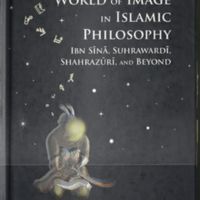The World of Image in Islamic Philosophy: Ibn Sina, Suhrawardi, Shahrazuri and Beyond
Dublin Core
Title
The World of Image in Islamic Philosophy: Ibn Sina, Suhrawardi, Shahrazuri and Beyond
Subject
Islamic philosophy
Description
Traces the medieval Islamic notion of a world of image from its conception until today. One of the most controversial issues that divided Islamic philosophers and theologians during the Middle Ages was whether human beings would have a spiritual or bodily existence after death. The idea of a world of image was conceived as a solution, suggesting that there exists a world of non-physical (imagined) bodies, beyond our earthly existence. This world may be reached in sleep, in meditation or after death. From the embryonic conception by Ibn Sina, to the radical rethinking by Suhrawardi and Shahrazuri into a sophisticated system, L. W. C. van Lit unravels the history of this idea. Using a distant reading approach for measuring the transmission, he further shows how the idea remained relevant for Muslim thinkers through the centuries, up until today. Key Features. Sets the record straight for the provenance and development of the idea of a world of image Reconsiders the extent of Suhrawardi's innovation and his importance for the development of philosophy in the Islamic world Shows the surprising trajectory of the development and reception of his idea Gives an insight to the nature of commentary writing in premodern Islamic discourse
Creator
L.W.C. Van Lit
Publisher
Edinburgh University Press
Relation
Series: Edinburgh Studies in Islamic Apocalypticism and Eschatology
Text Item Type Metadata
Original Format
Book
Citation
L.W.C. Van Lit, “The World of Image in Islamic Philosophy: Ibn Sina, Suhrawardi, Shahrazuri and Beyond,” Humanities Hub, accessed November 28, 2025, https://humanitieshub.sdsu.edu/omeka/items/show/1853.

